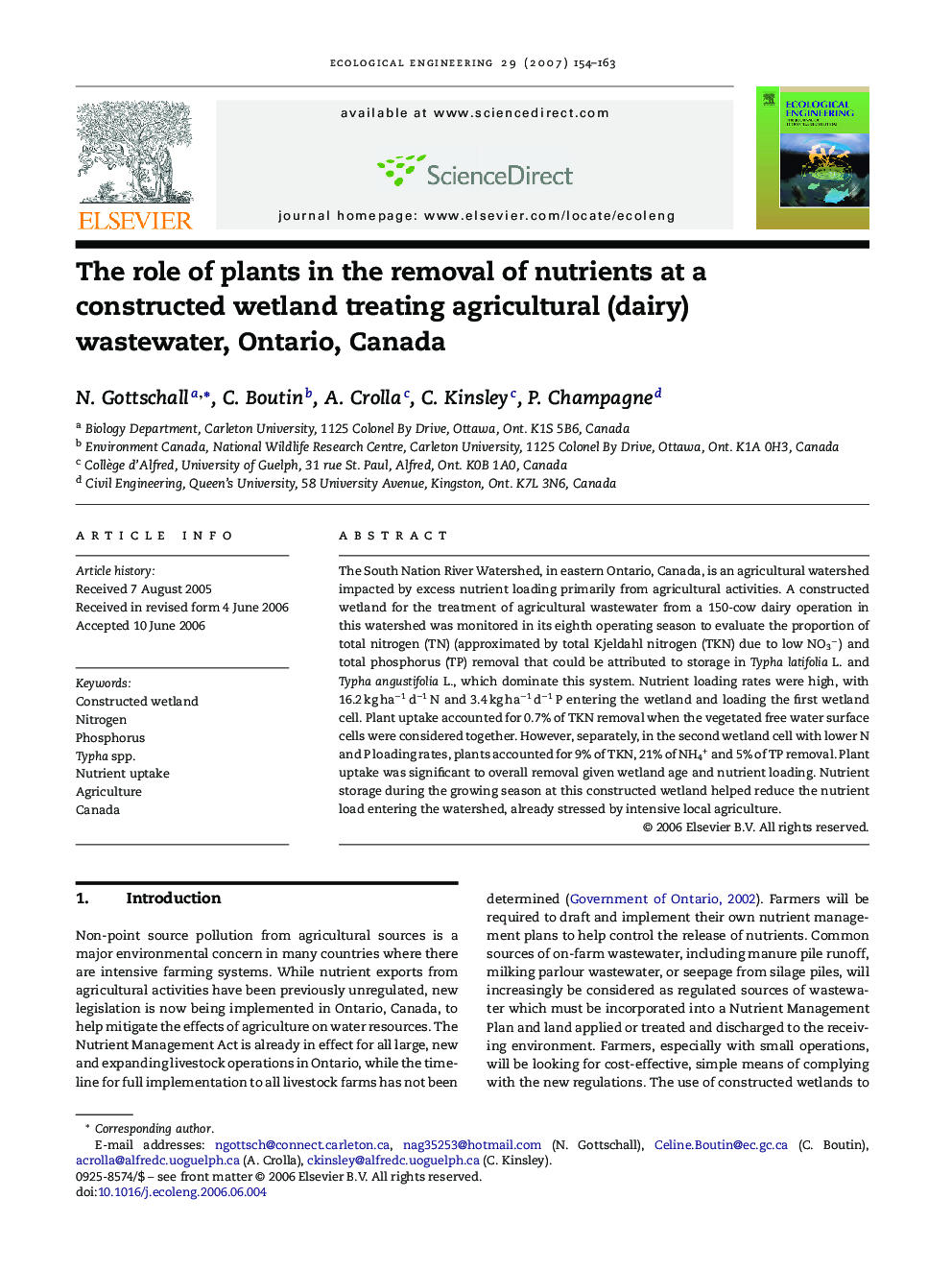| Article ID | Journal | Published Year | Pages | File Type |
|---|---|---|---|---|
| 4391283 | Ecological Engineering | 2007 | 10 Pages |
The South Nation River Watershed, in eastern Ontario, Canada, is an agricultural watershed impacted by excess nutrient loading primarily from agricultural activities. A constructed wetland for the treatment of agricultural wastewater from a 150-cow dairy operation in this watershed was monitored in its eighth operating season to evaluate the proportion of total nitrogen (TN) (approximated by total Kjeldahl nitrogen (TKN) due to low NO3−) and total phosphorus (TP) removal that could be attributed to storage in Typha latifolia L. and Typha angustifolia L., which dominate this system. Nutrient loading rates were high, with 16.2 kg ha−1 d−1 N and 3.4 kg ha−1 d−1 P entering the wetland and loading the first wetland cell. Plant uptake accounted for 0.7% of TKN removal when the vegetated free water surface cells were considered together. However, separately, in the second wetland cell with lower N and P loading rates, plants accounted for 9% of TKN, 21% of NH4+ and 5% of TP removal. Plant uptake was significant to overall removal given wetland age and nutrient loading. Nutrient storage during the growing season at this constructed wetland helped reduce the nutrient load entering the watershed, already stressed by intensive local agriculture.
